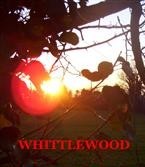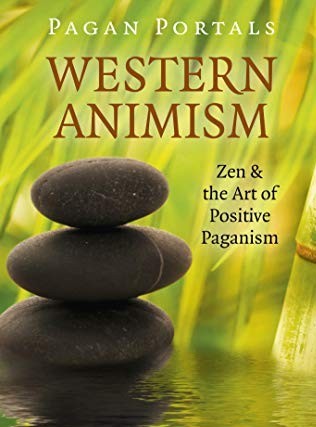
Looking back I can see how my Shinto upbringing (my father was a martial arts instructor and a countryman) made it so easy to pick up on the underlying animistic threads of Old Craft and its associated esoteric practices. From a small child I was in touch with that indefinable sensation of witch-power, god-power, ki, qi, or earth energy – call it what you will – the natural energy that is believed to be an active principle forming part of any animate or inanimate thing.
Ki, I soon learned, was the unseen life force in our body and everywhere. It was the universal energy that penetrates everywhere uniting all manifestations of the universe, visible or invisible, animate or inanimate. This was the first understanding of the practical advantages of this unseen life force. And because there is no official Craft litany, I use a lot of Shinto belief and Zen philosophy to demonstrate how the elevation of the mind leads to higher understanding regardless of the Path being followed. For the traditional Japanese there is no dividing line between the divine and human, since the forces that move in Nature move in man, according to Zen teaching:
When one looks at it, one cannot see it:
When one listens for it, one cannot hear it:
However when one uses it, it is inexhaustible.
I used this quote in one of the first esoteric books I had published – What You Call Time – and I find that I have come full circle in trying to explain that everything, magical and mystical, really just comes down to this basic understanding (and acceptance) of ki – or whatever you like to call it! Unfortunately, within contemporary paganism, there appears to be a widening schism between those who are immediately at one with these thoughts – and those who need to assume the outward trappings of esoteric practices to enhance their personalities and elevate their standing in the eyes of others, without bothering to develop the inner Self.
There was an amusing instance just recently when a close colleague was told by a ‘celebrity witch’, that I couldn’t possibly have the antecedents I claim, because there was nothing written about them in my books! ‘Well, there wouldn’t be, would there?’ came the response. I don’t happen to feel the need to add every jot and tittle to my writing in order to convince the readership that I have indeed walked the Path of the Mysteries. Those who study with me are the ones who reap the benefit of this received wisdom – not those who would only gain their knowledge from reading a wide assortment of esoteric books. In Zen it is the question that is most important – not the answer. And there is also understanding the concept of ‘secret teaching’ that always seems to rattles the cages of certain people in the magical community because they never stop to think of it as merely referring to the kind of teaching that cannot be set down in words but can only be learned through experience. These differences are also reflected in an increasing violence of speech within social media directed at those who do not share the same opinion over what are generally considered to be pagan issues.

I might even go so far as to say, that I find the level of personal intolerance far greater than it was when I first entered the pagan community back in the day. As an antidote, may I suggest that in the spirit of Zen it is possibly necessary to step away from this type of negative thinking and try seeing the world through the ‘way of the kami’. Folk Shinto (as opposed to State Shinto) includes numerous folk beliefs in supernatural agencies and spirits, and the practice of divination, ancestor worship, and shamanic healing. Some of these practices have been imported from Buddhism, Taoism and Confucianism, but the majority come from ancient local indigenous traditions that literally do trace their origins back to their hunter-gatherer ancestors. There are also many locations of stone ritual structures, refined burial practices and early tori that strengthened the continuity of primal Shinto; and at some point there was a recognition that the ancestors created the current generations and so the deep reverence of the Ancestors (tama) took shape. Here we find plenty of parallels between Eastern and Western paganism.
And I am not the only Western ‘pagan’ to recognise this juxtaposition. As Jon Moore wrote in Zen Druid: A Paganism for the 21st Century, earth-based spirituality is the bedrock of human interaction with Nature, the Cosmos and our fellow human beings. ‘In times of great change while the impetus is for reassessment and renewal, the field has become confused with different schools and methodologies. There are arguably now as many schools as there are practitioners.’
The Japanese find comfort and inspiration in the quality of their surroundings. They have built their shrines in spots of breath-taking beauty. They try to keep themselves constantly attuned to the loveliness all about them that leads them to participate in ceremonies and festivals that may seem strange to us. The Insect-Hearing Festival is an example of this. On a quiet evening in the early weeks of autumn, they sit quietly and listen to the noises of various insects. Just as typical is the story of the Zen teacher who stepped before his class one day to give a lecture. He paused to listen to the song of a bird outside the window, and then he dismissed the class. There are sermons in nature – and the Japanese hear them freely. This is surely paganism at its most pure and one we can easily identify with in the West without having to embrace the religious doctrines of the East because this old agrarian and animistic-based belief focuses on the existence and power of the kami that exist in nature, and throughout Japan – and the rest of the world. Kami or shin is often defined in English as ‘god’, ‘spirit’, ‘spiritual essence’ – all these terms merely meaning ‘the energy generating a thing’. Though the word kami is translated multiple ways into English, no one English word expresses its full meaning. The ambiguity of the meaning of kami is necessary, as it conveys the ambiguous nature of kami themselves.
Suzanne Ruthven is the founder of ignotus press which for over ten years was recognised as one of the leading publishers in the metaphysical genre. She is the author of over 50 titles in the metaphysical, country and folklore genres – including the magical novel, Whittlewood – and is one of the principal tutors for Coven of the Scales’ Arcanum foundation course.


